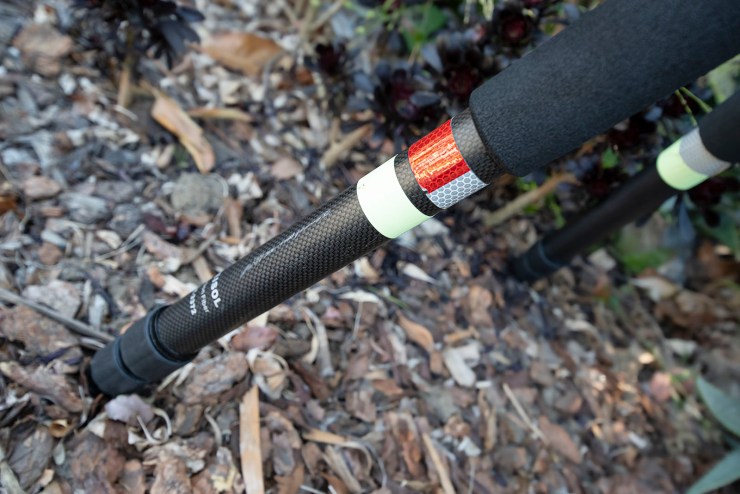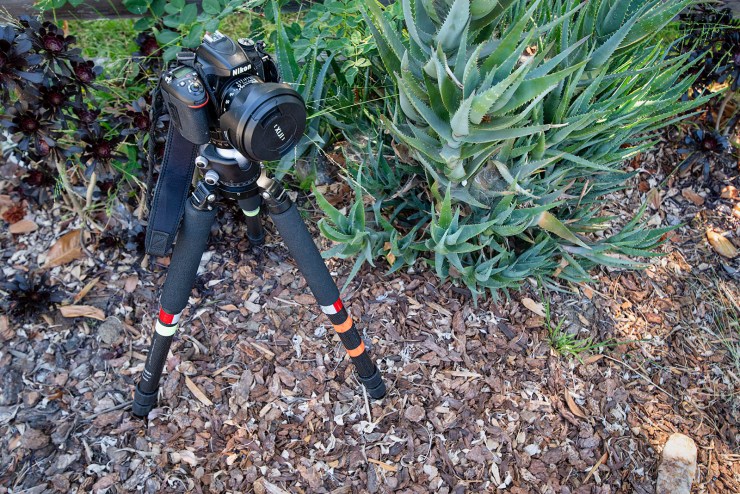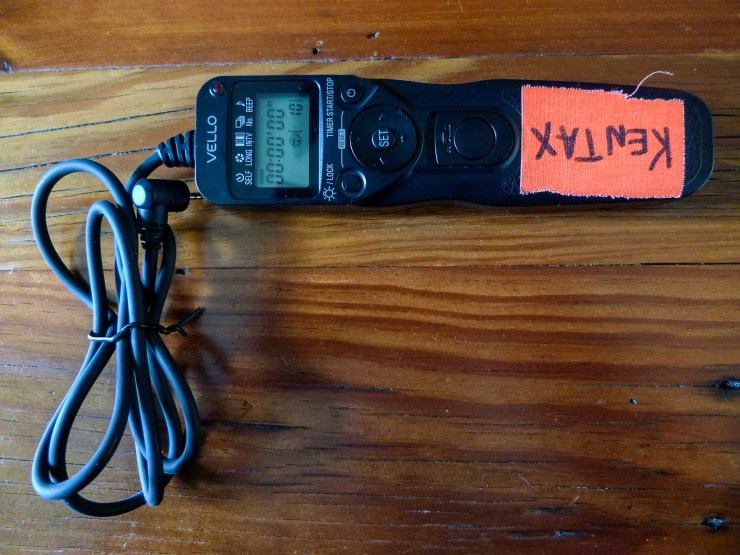Suddenly, I heard the frantic crunching of footsteps coming toward me. The figure whipped around the flashlight.
“Have you seen a camera on a tripod? I was doing a time-lapse and now cannot find it!”
Finding cameras in the dark of night
It was easy to see how he could lose his camera. Mesquite Flat Sand Dunes is a sea of sand dunes that stretch on for miles. And particularly in the dark, the sand dunes can begin to look alike after a while.
I never saw his tripod-mounted camera. Hopefully he found it.
But this taught me an early lesson. I had just begun doing really long exposures at night, photographing star trails. Therefore, I wanted to come up with a strategy that would avoid this very thing. I came up with several.
Three ways to make your tripod visible
1. Reflective tape

My first inclination was to use red and white reflective tape. The concept was simple. If you couldn’t find your tripod, walk around while moving your flashlight around. You would see red and white shining back at you. This could work from a quarter mile away or more if you had a straight line of sight. I tested this one night and it worked extremely well.
2. Glow in the dark tape
Although the first method worked, I had a concern. What if I were attempting to locate the camera, but waving around the flashlight ruined my photo? While this had never happened, I thought that I might come up with another method first. Enter glow in the dark tape.
Glow in the dark tape cannot be seen from as far away as shining a light on reflective tape. However, it can still be seen from relatively far away, especially if you shine your light on it before using it to make it glow. Up to now, I have never lost my camera. However, I feel comforted in seeing where my tripod is from relatively far away.

3. Blinking light
I use a Vello Shutterboss wired external intervalometer. When set, this produces a faint blinking red light. It’s bright enough that there are some photographers who tape over the light when doing high-ISO night photography, such as for Milky Ways. I’ve never had an issue with this personally, but it’s good to mention. Regardless, this is another way that my tripod is visible.

A number of night photographers I run into use blinking LED lights tied onto their tripod. I have never done this. However, it’s also a good idea. These lights can come in different colors as well, such as the beautifully named Kick Me Nots made by Astrogizmos. Or look for blinking LED lights that might work for you.
Mistakenly hitting or kicking your tripod
Discussing Kick Me Nots provides an excellent segue into another bonus of making your tripod visible. Probably just about all of us night photographers have kicked or run into our tripod at one time or another. Having blinking lights or glow in the dark tape really help to make the tripod considerably more visible.
Any time we can lessen the chance of plowing our tripod over or kicking one of the legs and ruining a long exposure photo is a beautiful thing.
Tell your story with the second annual Visual Storytelling Conference!
Experience four days of interactive, online training sessions featuring a range of educational content with experienced photographers and content creators. This free event kicks off with a series of technical boot camps to build essential skills, followed by live, online sessions on photography, video, business and social media. Join live from March 10-13, 2022!
